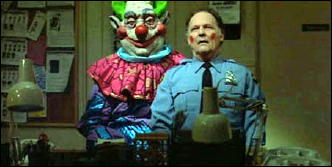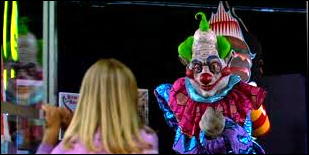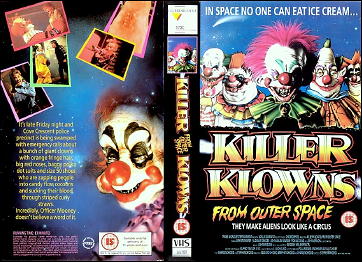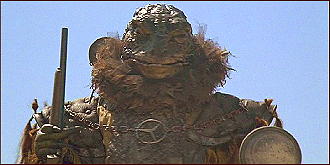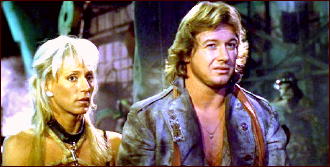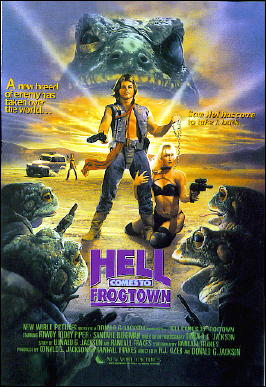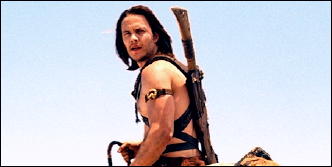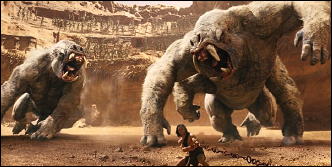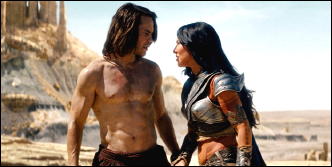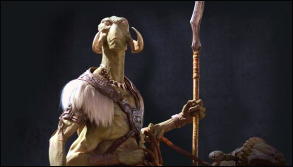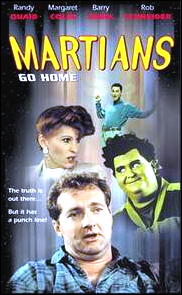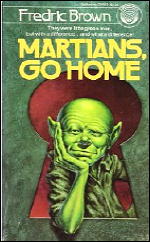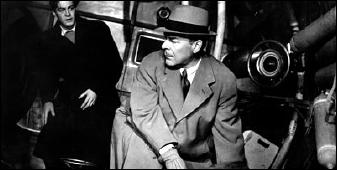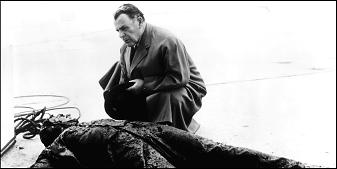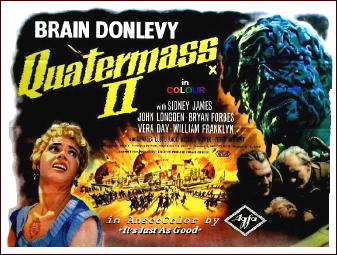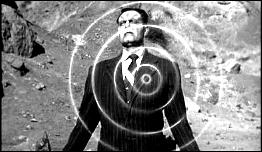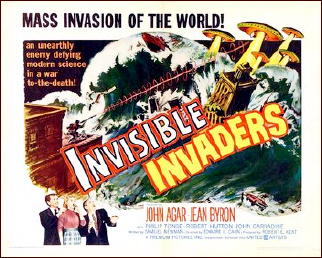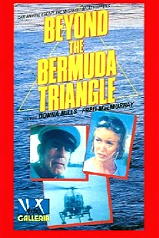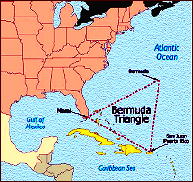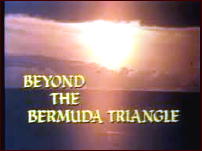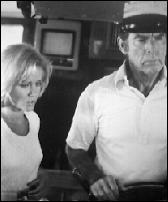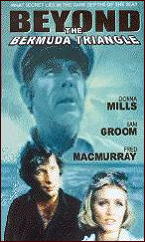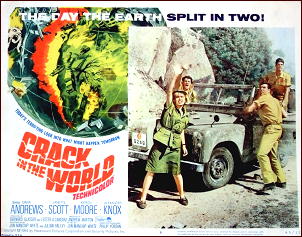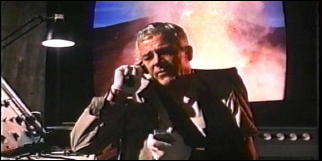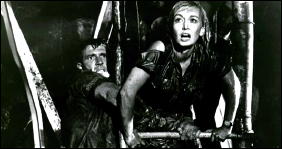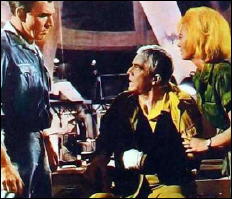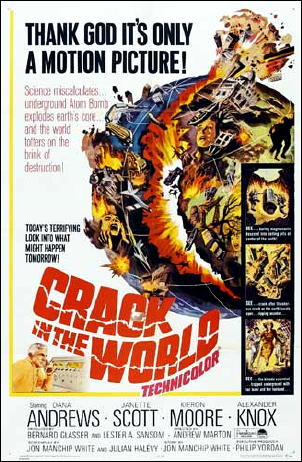Reviewed by DAVID L. VINEYARD:
DOOMWATCH. Tigon British Film Productions, UK, 1972. Released in the US as Island of the Ghouls. Ian Bannen, Judy Geeson, John Paul, Simon Oates, George Sanders, Geoffrey Keen, Percy Herbert, Shelagh Fraser. Screenplay by Clive Exton, based on the BBC series created by by Kit Pedler and Gerry Davis. Director: Peter Sasdy.

This cautionary thriller was based on the BBC television series of the same name starring John Paul, Simon Oates, Vivien Sherrard, and Robert Powell (1970-72) and adapted to this taut film about an environmental disaster on a small Cornish island dependent on fishing and the sea.
Ian Bannen is Dr. Shaw ( a new character created for the film) with Doomwatch, an organization that investigates the environmental impact of ecological disasters. After an oil spill he is dispatched to the small island of Balfe (a fictional creation) to ask a few questions and take some samples to see if local wildlife has been harmed.
Balfe (filming was done around Polperro and Mevagissey in Cornwall ) is a quiet place, insular and inbred. Shaw gets little cooperation and meets open resentment as he begins to nose around. The opening scenes build up a nice atmosphere as he encounters deeper mysteries; an unusually violent dog, someone following him everywhere, a child buried in the forest whose body disappears, and finally an attack by a strangely disfigured man that locals try to write off as an accidental fall on slippery rocks on the shore.
With the help of local teacher, Judy Geeson, Bannen begins to delve into the mystery it is now clear cannot be caused by the oil spill, and uncovers Castle Rock, an abandoned Naval dumping ground, but when he approaches Admiral George Sanders he learns the low level radioactive material dumped by the Royal Navy could not have caused the problem on the island.

A dive at the dumping site uncovers industrial experimental growth hormones dumped there illegally. The radiation caused the hormone filled canisters to burst and contaminated the fish eaten by the islanders.
But even when they know the cause of the disease the insular and increasingly violent islanders don’t want their life disturbed, and may kill to protect their way of life. They believe the disease is caused by inbreeding and is a judgment of God. They are too ashamed to seek help, and frightened of being forced to leave their ancestral home: in its last stages the disease can produce violence and madness — and in several cases has led to murder and suicide.
The film produces a powerful statement about the impact of such a disaster, and while it was science fiction at the time it hardly seems so today. If anything, the scenes of the clean up of the oil spill at the beginning of the film are more chilling now than they were then. But it works as an intelligent and thoughtful mystery thriller despite and sometimes thanks to its minuscule budget.
Filming was done effectively in and around the rugged Cornish coast, and the unique architecture of the island towns gives it an curiously threatening and yet quaint look. Bannen is effective as the passionate scientist and Geeson the outsider only partially accepted by the islanders. Sanders, seems mostly tired as the Admiral and Keen (probably best known to American viewers as the Foreign Minister in the James Bond films) has little to do as the industrialist who farmed out the clean up to the lowest bidder.

Character actor Percy Herbert has one or two brief scenes as one of the islanders effected by the disease but hanging on to his humanity and common sense. Shelagh Fraser is good as Bannen’s landlady, trying to maintain her secrets and contain her grief over her desperately ill and grotesquely deformed husband.
The ending, as Doomwatch and the Navy try to clean up the mess, is effectively downbeat, and if it’s a letdown from the monsters and horrors suggested earlier in the film it offers instead a sober, intelligent, and moving picture of the devastation left behind by greed and carelessness and the difficulty of dealing with such a small secretive and inbred community.
Running only 88 minutes (I’ve seen it listed as everything from 70 to 92 minutes, but the DVD I viewed was 88), this is an almost gentle film, handsomely shot, and done with real intelligence and a determination to avoid sensationalism and replace it with real drama and suspense, and in those things it succeeds.

As in real life there are no real villains and no easy answers. The corporate types tried to save money and chose the low bidder to dispose of the waste and the company who disposed of the waste was stupid not criminal.
The writers eschew sensational sub-plots and stick to the human story, and it is more powerful for it with no corporate intrigue, chases, and hired hit men tacked on for filler; just real people in a real crisis. Just how much tension and threatened violence they ring out of that may surprise you.
Doomwatch is sometimes unfairly compared to The Wicker Man, but only the setting and the idea of the insular island society and an outsider’s reaction to it and uncovering its mysteries are the same. It is primarily a mystery and suspense film, but often promoted as horror or science fiction.
Writers Kit Pedler and Gerry Davis also wrote a Crichtonesque novel, Mutant 59: The Plastic Eaters adapted from an episode of Doomwatch TV series, as well as the novels Brainrack and The Dynostar Menace.
Kit Pedler (aka Dr. Christopher Magnus Pedler) was the unofficial scientific adviser on Doctor Who and wrote several scripts, among them “Tomb of the Cybermen,” in which he created one of the Doctor’s most enduring foes, the Cybermen.

Screenwriter Clive Exton’s credits include adapting Edgar Wallace’s On the Spot and Francis Durbridge’s The World of Tim Fraser for television, the screenplays for Night Must Fall and 10 Rillington Place, and would be best known here for the Jeeves and Wooster series with Hugh Laurie and Stephen Fry, and the Poirot series with David Suchet.
Director Peter Sasdy directed several Hammer films including Countess Dracula, Taste the Blood of Dracula and Hands of the Ripper. He also directed the film of Nigel Kneale’s The Stone Tapes, and somewhat less successfully Harold Robbins The Lonely Lady with Pia Zadora. His other work includes Sherlock Holmes and the Leading Lady with Christopher Lee and the television series Callan, with Edward Woodward.
The disease the islanders suffer from is acromegaly, a disease of the pituitary gland, probably the best known sufferer of the disease being actor Rondo Hatton, the Creeper of Hollywood fame, whose distinctive features were exploited in several Hollywood horror films (The Pearl of Death from the Sherlock Holmes series, The Return of the Spider Woman, The Brute Man) before his early death from the disease in 1946.
